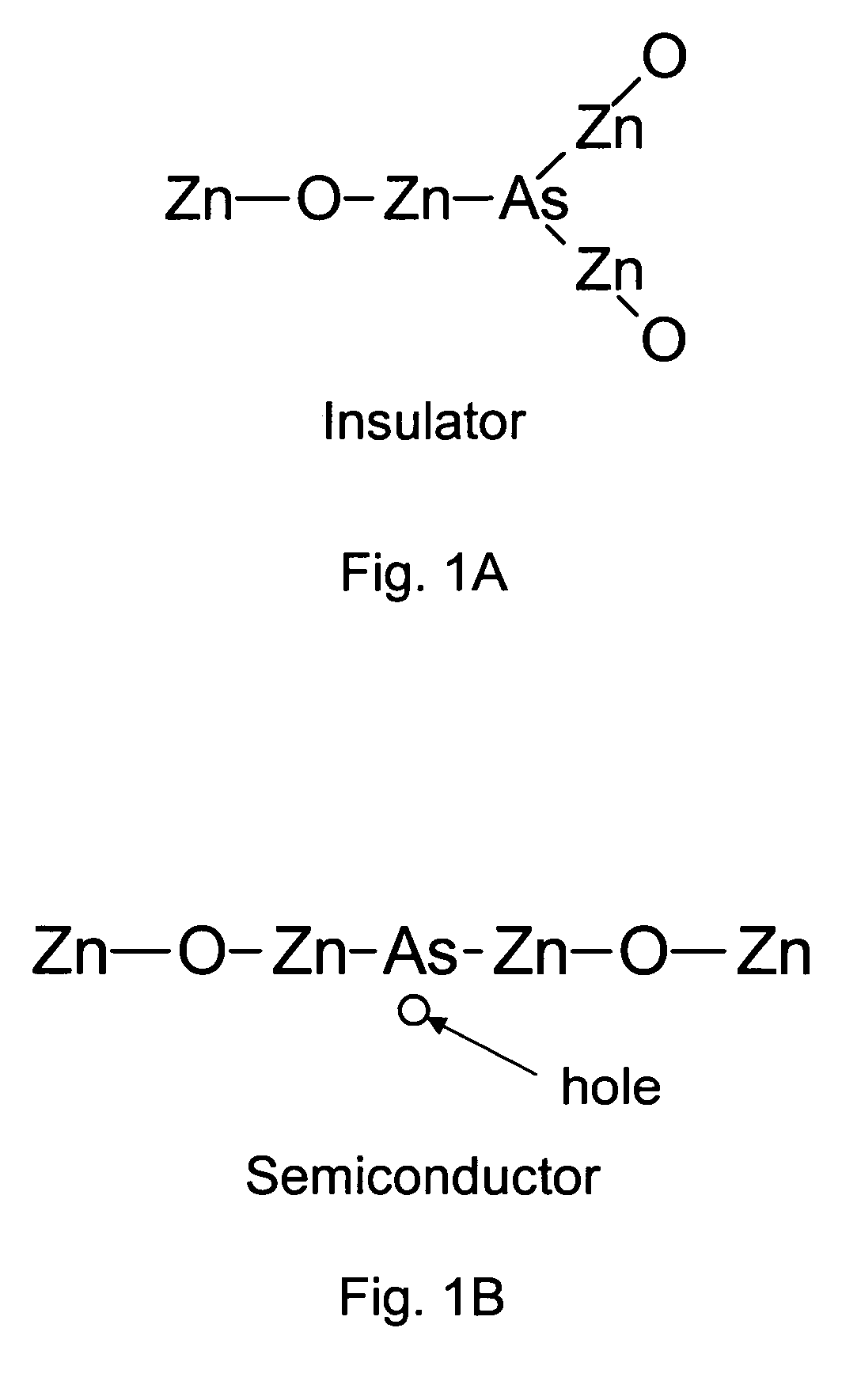Low dielectric constant group II-VI insulator
a dielectric constant and group ii-vi technology, applied in the direction of crystal growth process, sulfur compound, semiconductor laser, etc., can solve the problems of crosstalk noise, resistance-capacitance delay (rc delay), and limiting factors for ultra-large-scale integration of integrated circuits
- Summary
- Abstract
- Description
- Claims
- Application Information
AI Technical Summary
Problems solved by technology
Method used
Image
Examples
example 1
[0023]A low dielectric zinc oxide insulator material is fabricated by obtaining zinc oxide doped with arsenic at a dopant concentration of about ¼ mole %. The arsenic-doped zinc oxide possesses p-type semiconductor properties. The arsenic-doped zinc oxide is heated to a temperature greater than about 450° C. for a time period of about 10 minutes. The resulting arsenic-doped zinc oxide has been converted to an insulator and has a low dielectric constant.
example 2
[0024]A low dielectric zinc oxide insulator material is fabricated by obtaining zinc oxide doped with arsenic at a dopant concentration of at least 1018 atoms / cm3. The arsenic-doped zinc oxide possesses p-type semiconductor properties. The arsenic-doped zinc oxide is heated to a temperature greater than about 450° C. for a time period of about 10 minutes. The resulting arsenic-doped zinc oxide has been converted to an insulator and has a low dielectric constant.
example 3
[0025]A low dielectric zinc oxide insulator material is fabricated by obtaining zinc oxide doped with antimony at a dopant concentration of at least 1018 atoms / cm3. The antimony-doped zinc oxide possesses p-type semiconductor properties. The antimony-doped zinc oxide is heated to a temperature greater than about 650° C. for a time period of about 10 minutes. The resulting antimony-doped zinc oxide has been converted to an insulator and has a low dielectric constant.
PUM
| Property | Measurement | Unit |
|---|---|---|
| resistivity | aaaaa | aaaaa |
| resistivity | aaaaa | aaaaa |
| temperature | aaaaa | aaaaa |
Abstract
Description
Claims
Application Information
 Login to View More
Login to View More - R&D
- Intellectual Property
- Life Sciences
- Materials
- Tech Scout
- Unparalleled Data Quality
- Higher Quality Content
- 60% Fewer Hallucinations
Browse by: Latest US Patents, China's latest patents, Technical Efficacy Thesaurus, Application Domain, Technology Topic, Popular Technical Reports.
© 2025 PatSnap. All rights reserved.Legal|Privacy policy|Modern Slavery Act Transparency Statement|Sitemap|About US| Contact US: help@patsnap.com

